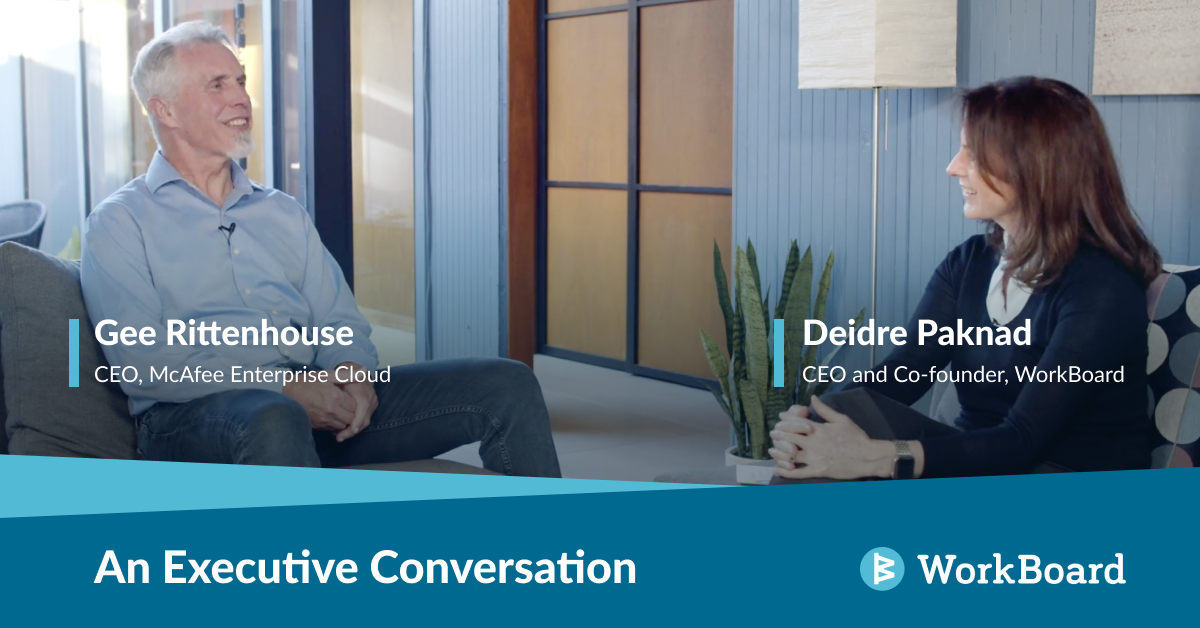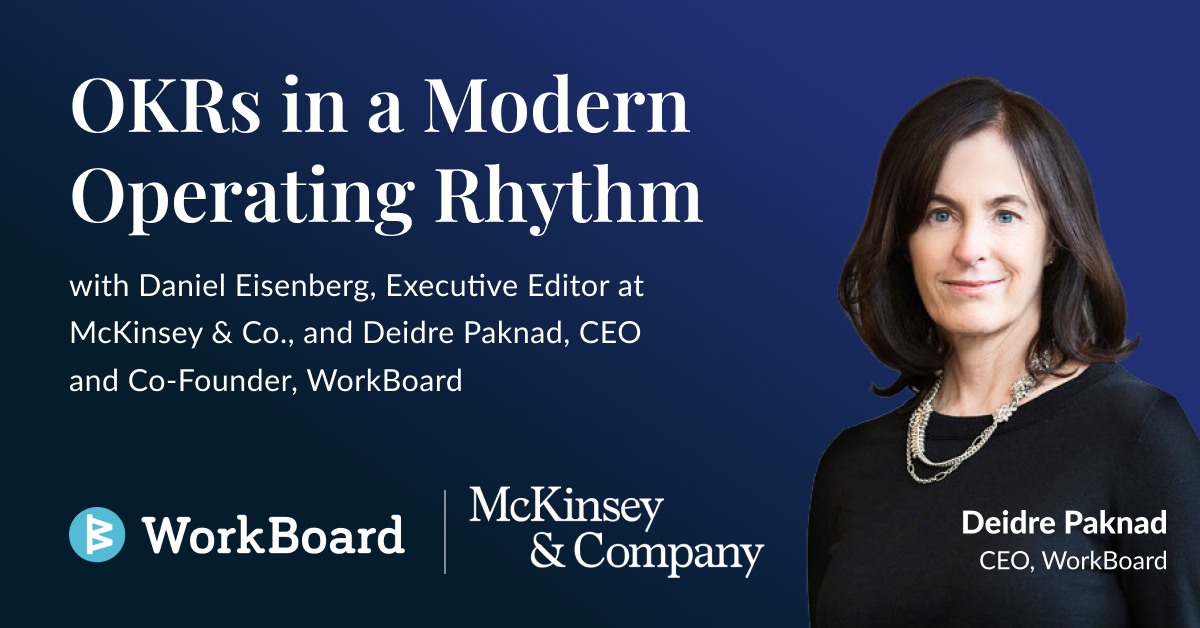
As CEO of Skyhigh Security (formerly McAfee Enterprise Cloud), and a former executive at Cisco, Gee Rittenhouse cultivates learning organizations that consistently test their strategic hypotheses to reinforce accountability and build confidence.
In a recent executive conversation with WorkBoard CEO and Co-founder Deidre Paknad, he shared how as a leader, he leverages OKRs to drive accountability, strategy execution, and cultural transformation.
We’re excited to pass along a few top highlights from the conversation, but you should still check out the full replay to hear more from Gee on how he implements OKRs to drive transparency and alignment across teams while empowering people and ensuring they understand how their work contributes to moving the business forward.
Translate Strategy Throughout the Entire Organization
At Cisco, one of the largest multi-functional companies in the world, using OKRs helped gain alignment across functions so that everyone was interpreting the strategy in the same way and executing on it constructively, he said.
For any company, building and sustaining momentum is critical.
“There’s the old adage that if you do 1% every day, you don't realize at the end how much ground you've covered. But if you don't do that in a coherent way, you've done 1% every day in a random direction,” said Gee, the former SVP of Cisco’s Security Business Group.
“We would do employee engagement surveys and a common level of feedback was that they did not understand the strategy or how their work contributed to the strategy,” Gee said. “We realized very quickly we were aligned on the strategy on a page, but we weren't aligned in execution.”
“OKRs provide that clarity from the top,” he said. Then, at every level, as teams set their OKRS in the context of their work they understand how it contributes to the organization’s priorities, providing context for the entire organization.
“OKRs help everyone see where they are in the business and where they have to go in order for the overall business to be successful,” he said. “They not only provide the alignment so that you have visibility, but you're aligned in objectives, you’re aligned in what's important, you're aligned in the accountability between two groups or multiple groups.”
Challenge Assumptions
Every organization has a strategy to win and to grow.
“Then you realize, wait a second, we grew, but not in that market and not with that product,” Gee said. “We didn't quite understand it the way we thought we did.”
Introducing the OKR construct as part of a digital operating rhythm prompts the introspection and conversations needed to gain that understanding and to challenge assumptions.
“It forces you to put a hypothesis in place that is then measurable at the end of the quarter,” he said. You paint a picture of how you are going to reach the objectives and how things are going to play out, and to make choices.
Out of the hundreds of things you could possibly be doing, what are the top five? “That brings a sense of intent to the business that forces you to really execute cleanly,” he said.
Transform the Culture and Your Business
Companies adopt OKRs to improve productivity, go faster and be more agile, Gee said, but the methodology goes beyond that.
“OKRs are as much of a cultural transformation as a business process transformation. It forces you to really evaluate who you are, and what you are doing,” he said. “Those are questions that aren't often asked in companies that haven't adopted this type of approach.”
It is in the deeper conversations that you see increasing benefits over the long run, he said.
“You transform everything. It's not just the productivity, you transform the entire organization.”
Learn more of Gee’s tips for successful strategy execution, and find out how a digital operating rhythm can create the alignment and momentum needed to more quickly achieve your bold vision and business goals.
Like it? Get more and share!









